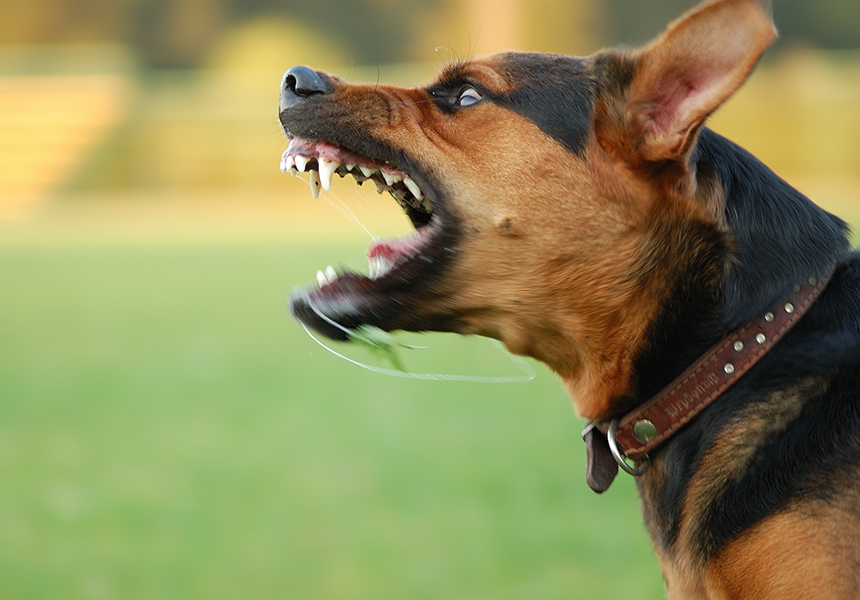
5 Ways to Handle Fear Aggression in Dogs
Does your dog growl or lunge when backed into a corner? Has your dog turned around and nipped at a person as they’re walking away? When looking at their body posture, do your dog often cower, lick their lips, and bare their teeth while retreating?
These all may be signs of fear-aggressive behavior.
The Root of the Behavior
Most aggressive behavior can be traced back to fear as the motivating factor. If a dog has been in a situation where it hasn’t been raised correctly and treated in a humane manner, it may result in fear aggression. This can be made worse when new owners or inexperienced trainers use punishment-based techniques for training.
Another potential cause of fear aggression is a lack of socialization during the puppy stages. If not socialized properly, your dog may find it hard to cope with new encounters with things in their environment like people— especially children— animals, and other dogs.
Recently, Sit Means Sit South Chicagoland encountered a dog that was exhibiting some signs of fear aggression. His owner, Evelyn, had this to say about our training process:
“Our dog had stranger/fear aggression that was limiting our ability to give him an active lifestyle by going to dog parks or out in public. We also couldn’t have friends or family over without causing a scene. Kerry and Bobby did an amazing job with our dog and he now can accompany us out in public and we can have guests over. We are so grateful to Sit Means Sit and love that everyone can see the dog that we love for who he is now!”
How did we do it? Read our 5 tips on training a fear aggressive dog!
1. Reward Calmness
When your dog is exhibiting fearful behavior and is barking or growling, the best thing to do is to stay calm. Your increase in energy will only feed into their anxiety if you start to yell and shout at them. While you may also want to start using a high-pitch voice to tell them everything is okay, it’s best to avoid this as well.
The best thing to do when your dog is acting fearful is to stay silent and move them to a place where they can relax.
2. Set Your Dog Up to Win
Dogs who are fear aggressive need a controlled space where they feel safe. Crate training can give them a place where they feel secure, but you’ll want to take an extra step and control the environment around the crate as much as possible. If a trigger shows up, for example another dog or a small child, move your dog to their safe space and don’t allow the other dog or people in the same room as the dog.
You want your home environment to be as predictable as possible. Find a routine and stick with it, avoiding any big surprises.
3. Know Your Dog’s Triggers
Like people, dogs have different triggers for their fear response. It’s important to make the distinction between a fear response and excitement. Your dog may get excited to see the neighbors but is fearful of your mailman.
Some dogs are fearful of other dogs. To avoid these triggers, you can take a later walk when you’re less likely to run into other pups. Maybe your dog has a fear response to children. Keeping children away from your dog’s safe space can help you avoid that trigger.
4. Take it Slow
Rome wasn’t built in a day and you won’t be able to totally train all fear out of your dog in one session. In fact, for some dogs, they may never be totally relieved of their fear— but it can be greatly reduced! Have patience, stay consistent, and don’t overwhelm your pup for maximum success.
5. Find a Qualified Trainer Near You
Finding the right trainer for your dog can be a tricky prospect. You want a professional that has the skills and expertise your dog needs.
Research the experience of any and all trainers you’re considering and interview them. Ask about their methods and philosophies and how long they’ve been training. You also want to dive deep into their success stories with fear aggressive dogs.
You never want to allow a professional trainer to use physical punishment or intimidation methods with your dog— especially a fear aggressive one. They can be significant stressors and have a high likelihood of making your dog’s aggressive behavior worse in the long run.
Our team of expert dog trainers in Chicago and beyond have the experience to treat your fear aggressive dog.
